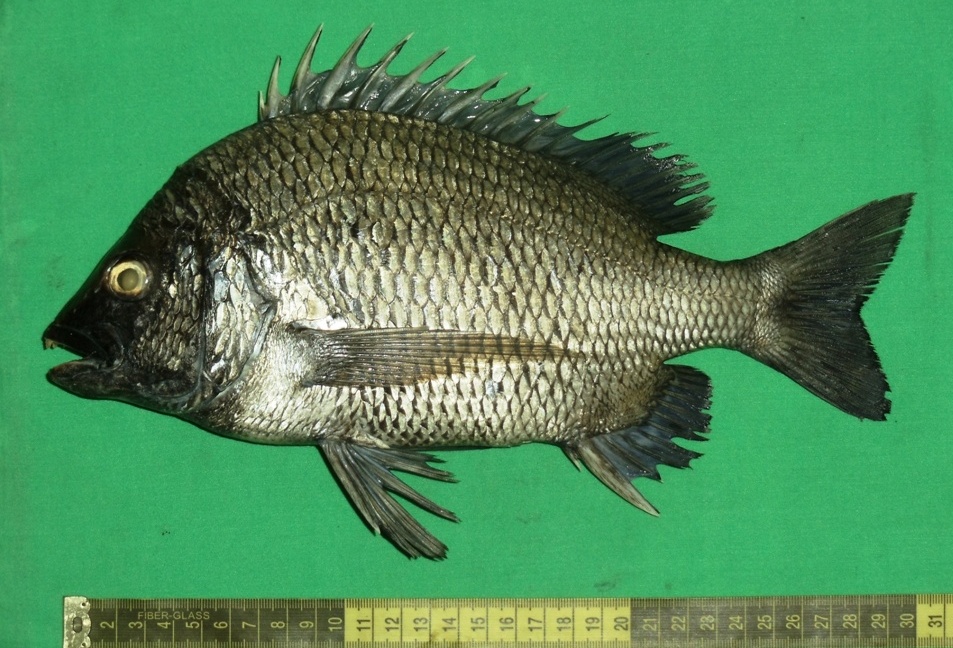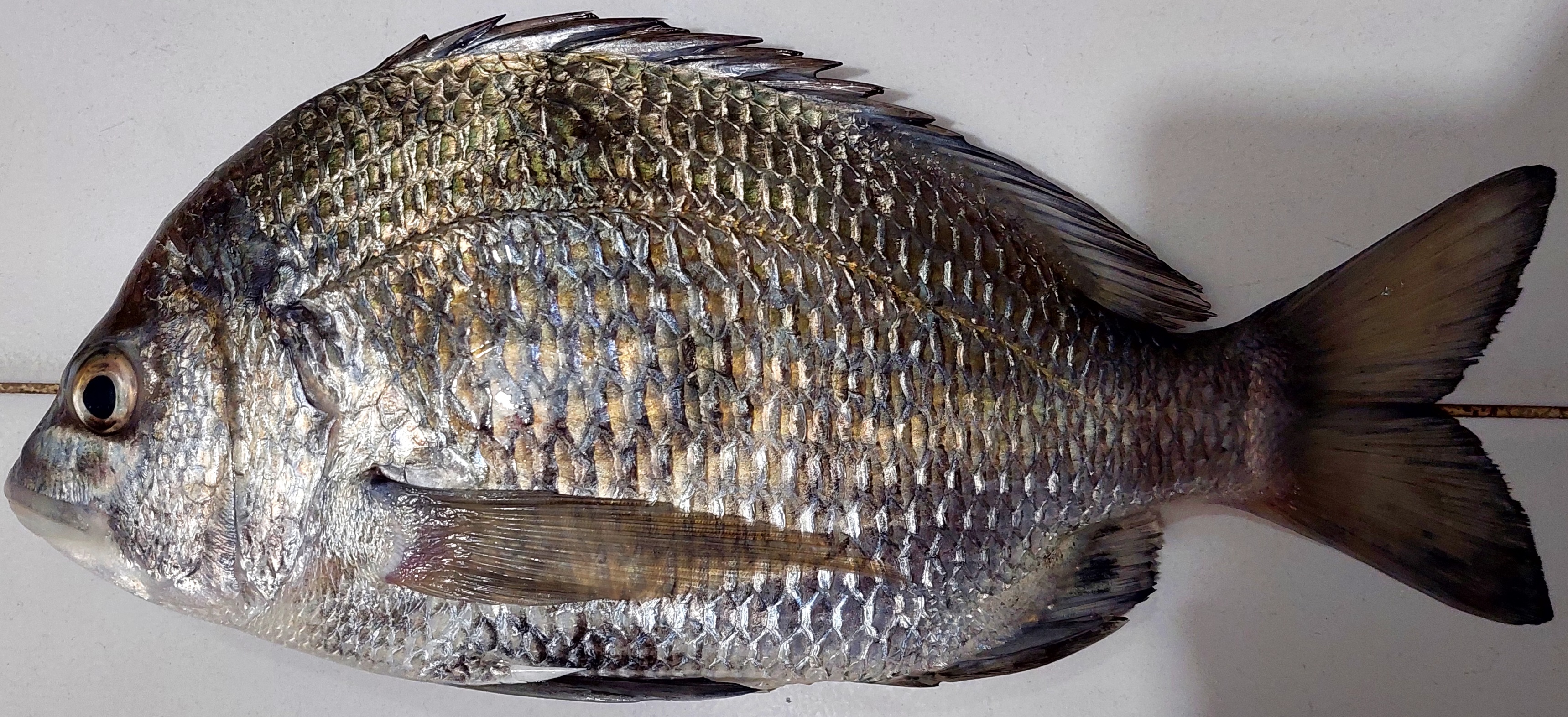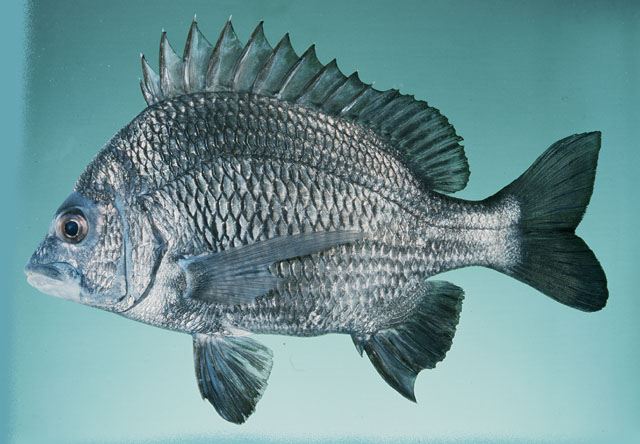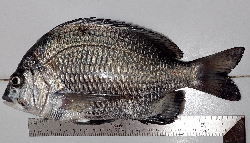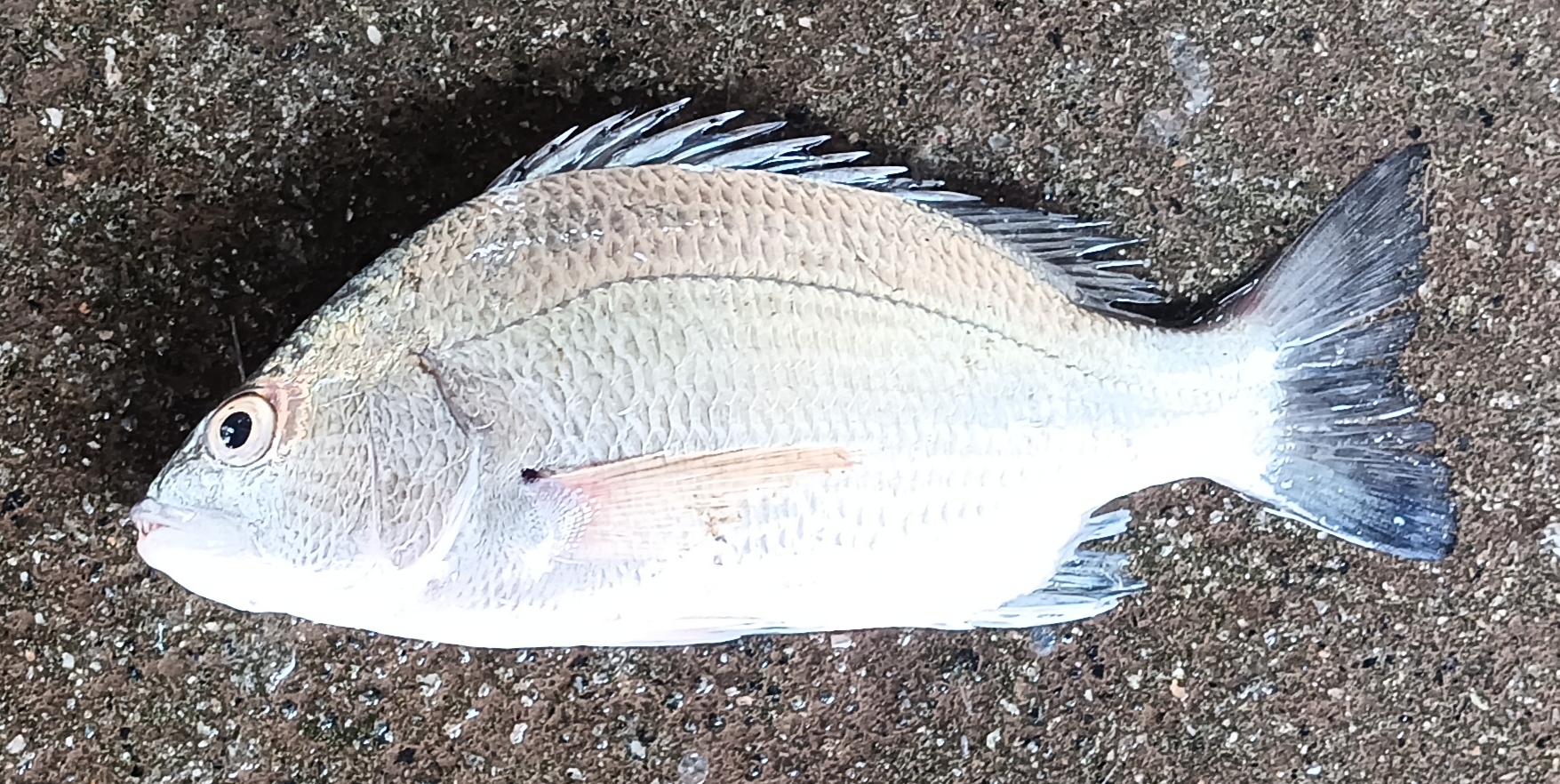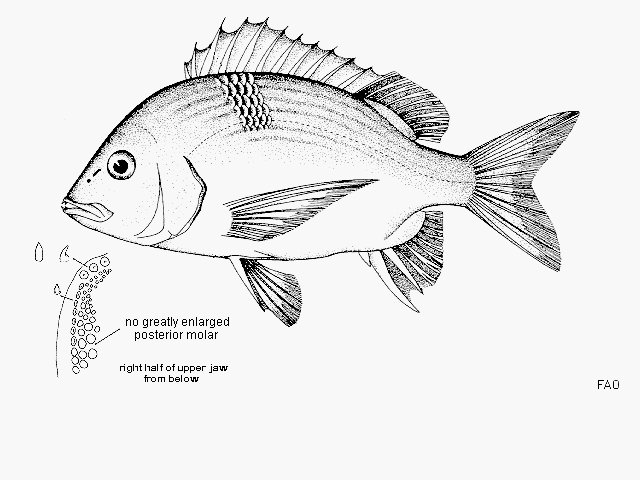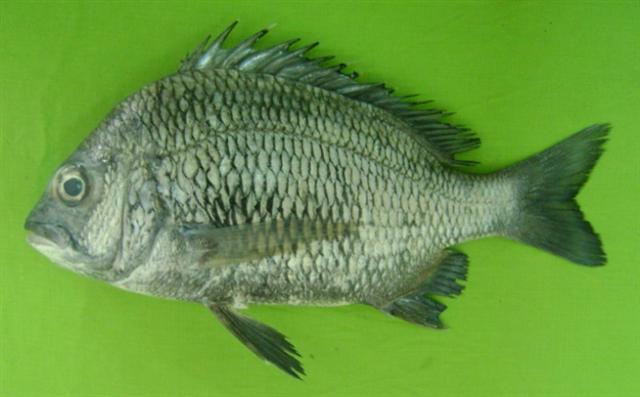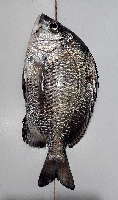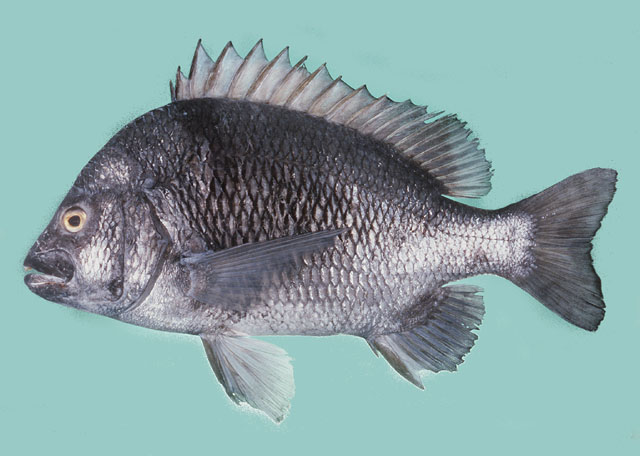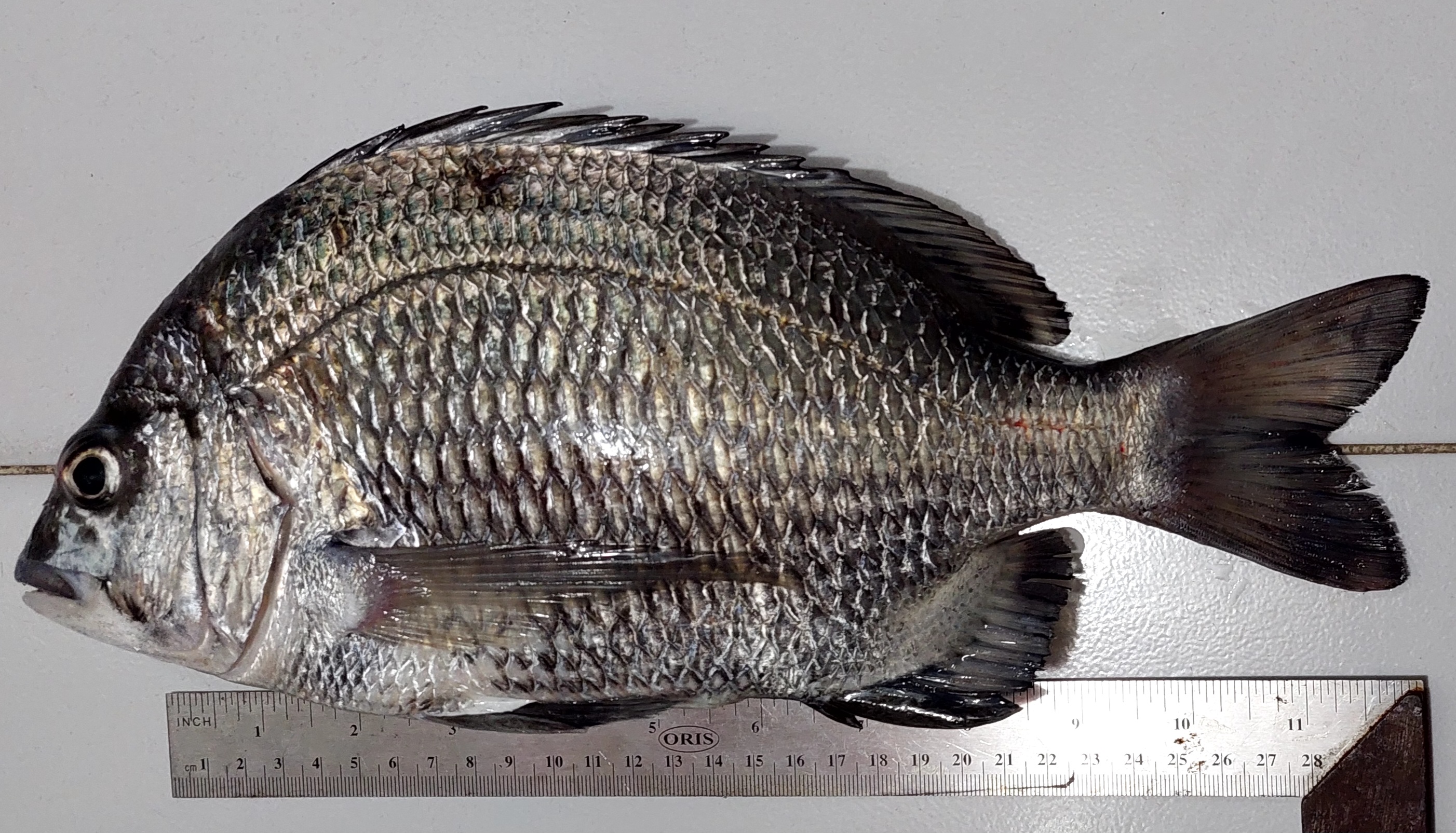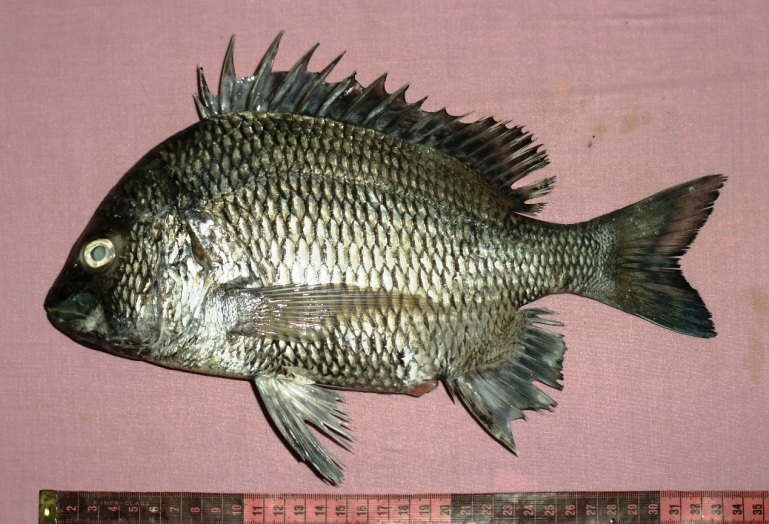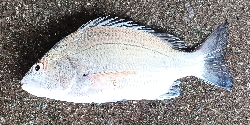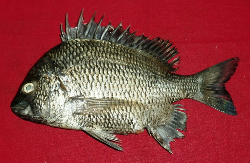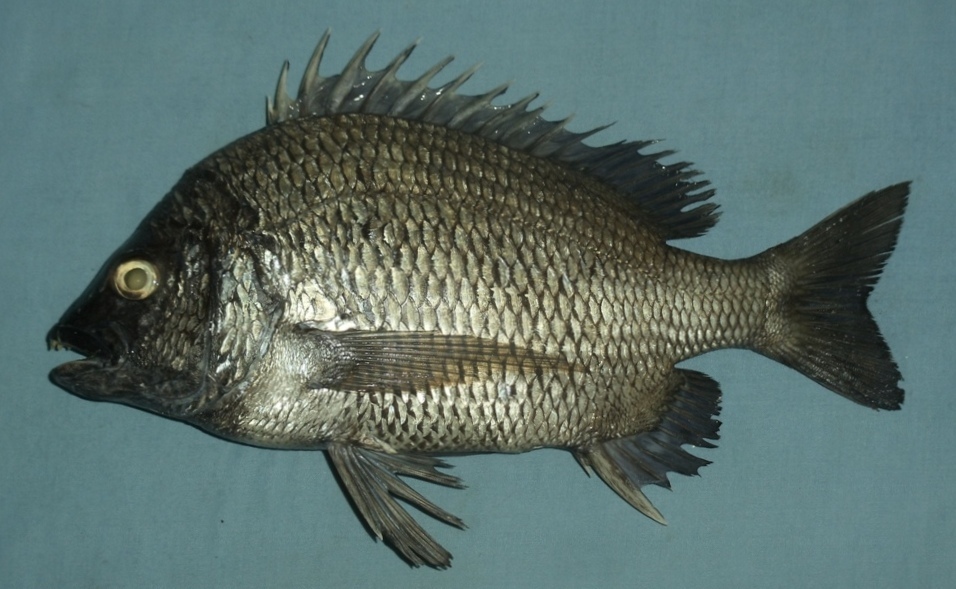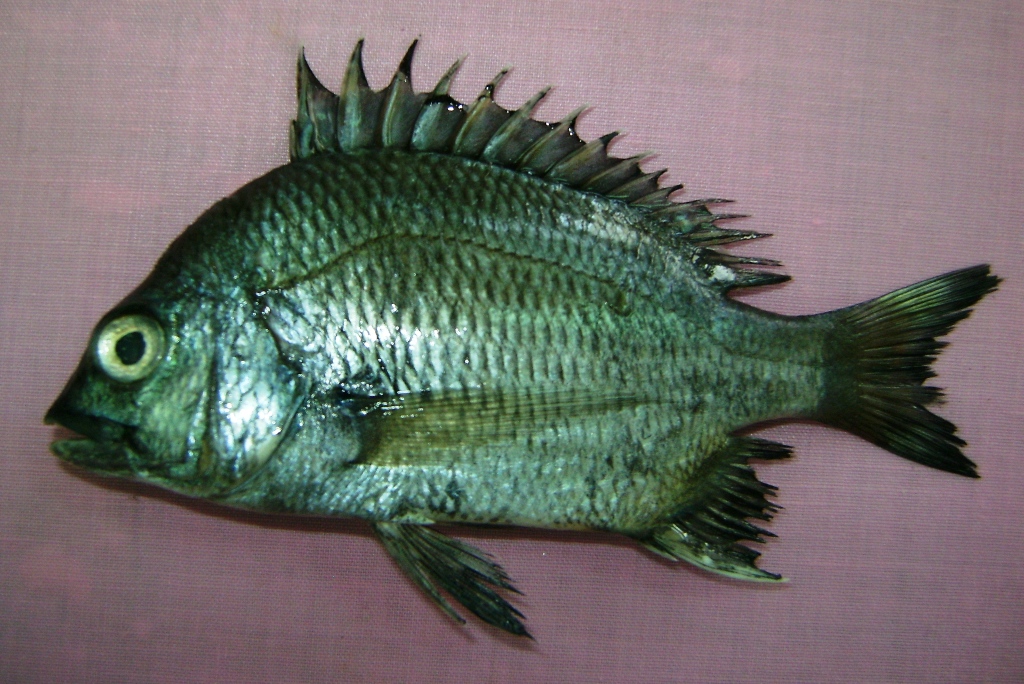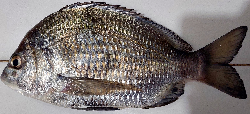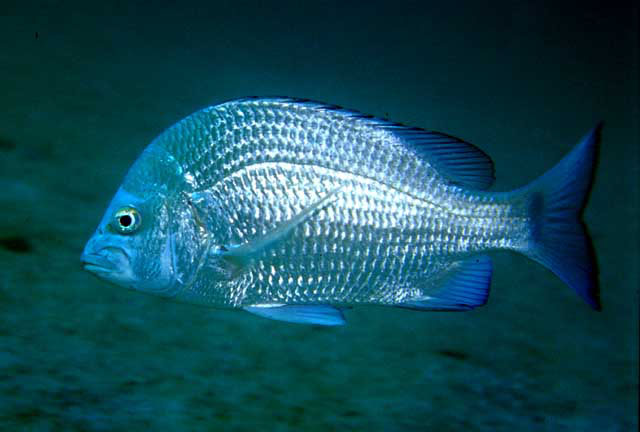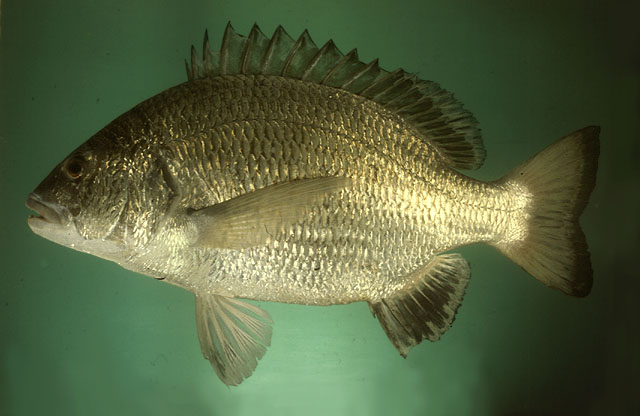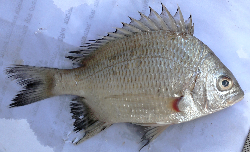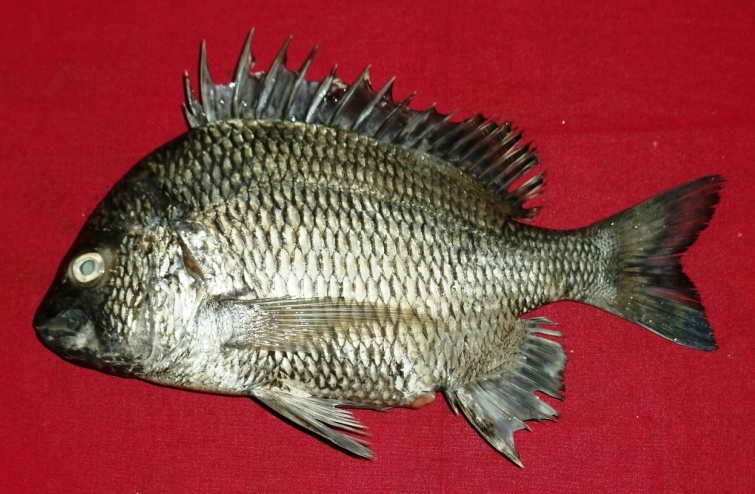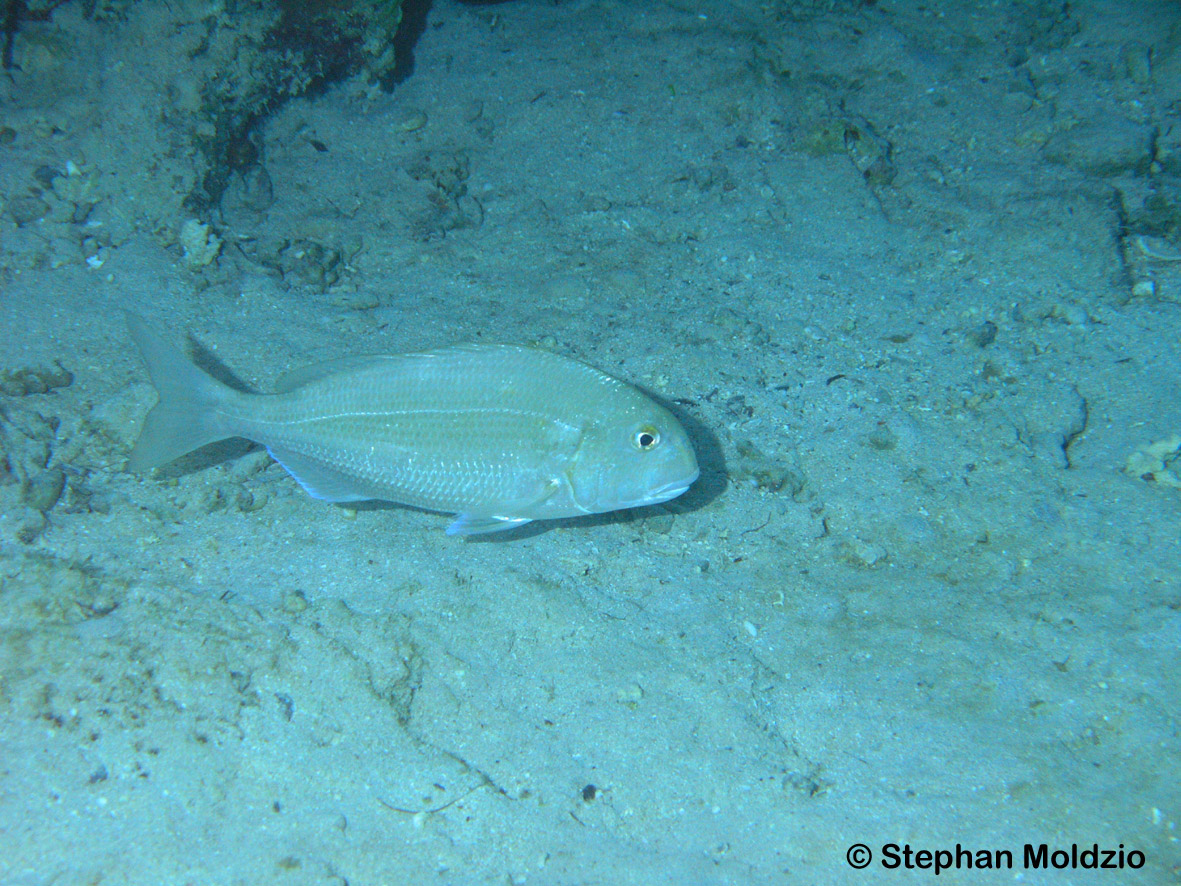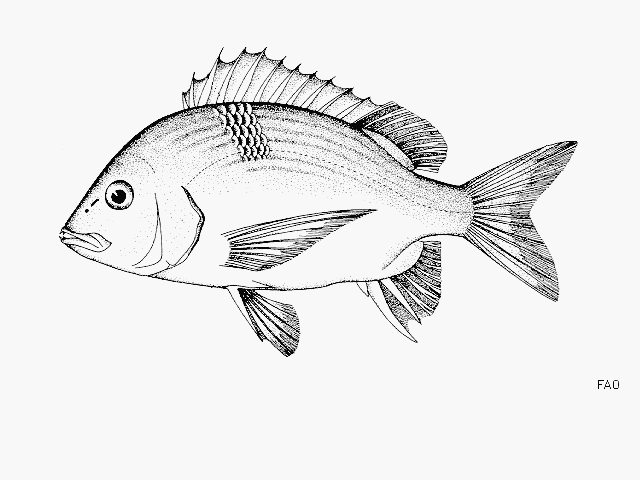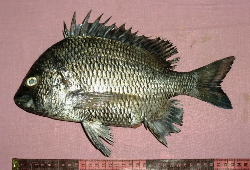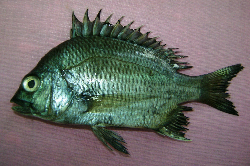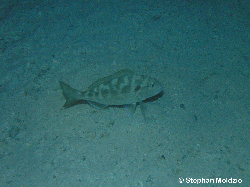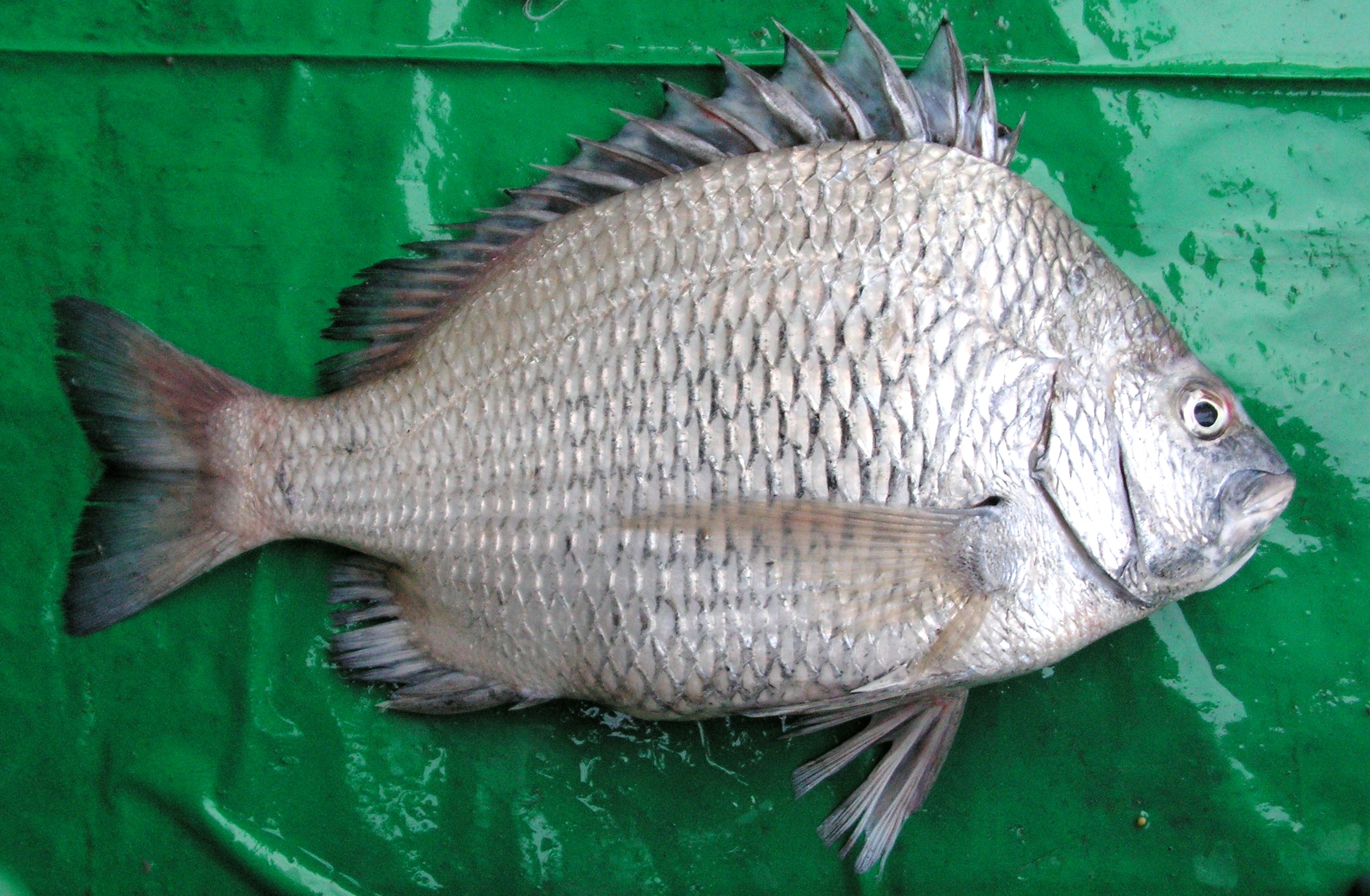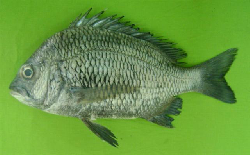Acanthopagrus berda (Fabricius, 1775)
Description
Dorsal spines (total): 11 - 12; Dorsal soft rays (total): 10 - 13; Anal spines: 3; Anal soft rays: 8 - 9. Diagnosis: This species is distinguished from all its congeners by the following characters: scale rows between fifth dorsal-fin spine base and lateral line 3.5; front edge of dorsal scaly area on head slightly convex, with small scales (fewer than 20) anteriorly; pored lateral-line scales 42-44; second anal-fin spine (2AS) longer than third anal-fin spine (3AS), 2AS/3AS ratio 1.23-1.50 (mean 1.36); strongly curved concavity on ventral edge of first two infraorbitals above rear end of maxilla, particularly obvious in specimens more than 13 cm standard length; scales on preopercle flange absent; anal-fin membrane dark; molariform teeth strongly developed along both jaws, teeth rows strongly curved laterally at rear of lower jaw (Ref. 83673).
Common Names
No common names available.
Taxonomic Hierarchy
Kingdom: Animalia
Phylum: Chordata
Class: Teleostei
Order: Eupercaria/misc
Family: Sparidae
Genus: Acanthopagrus
Species: Acanthopagrus berda (Fabricius, 1775)
Climate Zone
Location
Biology
Common in estuaries, relatively uncommon in freshwaters (Ref. 52193). It feeds on invertebrates, including worms, mollusks, crustaceans and echinoderms (Ref. 5213), and small fish (Ref. 3670, 52193). Breeds in winter at sea (Ref. 52193). Protandrous hermaphrodite (Ref. 55367). The flesh is excellent; sold fresh in markets. It is parasitised by the monogenean Anoplodiscus australis on the fins and body surface (Ref. 124057).
Habitat
freshwater
Conservation Status
Least Concern
Threat to Humans
Harmless
